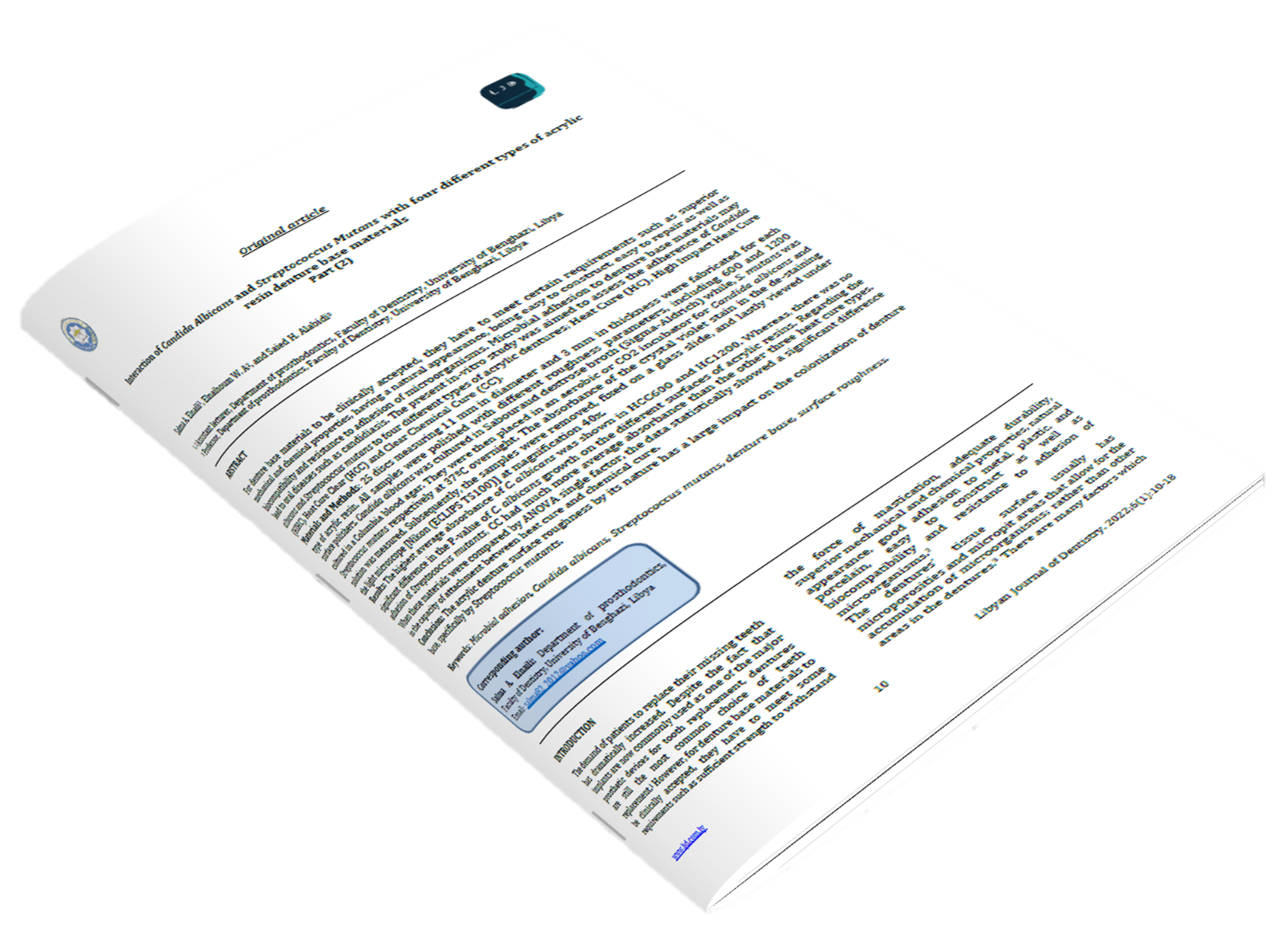Interaction of Candida Albicans and Streptococcus Mutans with four different types of acrylic resin denture base materials Part (2)
DOI:
https://doi.org/10.37376/ljd.v6i1.3725Abstract
For denture base materials to be clinically accepted, they have to meet certain requirements such as superior mechanical and chemical properties, having a natural appearance, being easy to construct, easy to repair as well as biocompatibility and resistance to adhesion of microorganisms. Microbial adhesion to denture base materials may lead to oral diseases such as candidiasis. The present in-vitro study was aimed to assess the adherence of Candida albicans and Streptococcus mutans to four different types of acrylic dentures; Heat Cure (HC), High Impact Heat Cure (HIHC), Heat Cure Clear (HCC) and Clear Chemical Cure (CC).
Materials and Methods: 25 discs measuring 11 mm in diameter and 3 mm in thickness were fabricated for each type of acrylic resin. All samples were polished with different roughness parameters, including 600 and 1200 surface polishers. Candida albicans was cultured in Sabouraud dextrose broth (Sigma-Aldrich) while, S. mutans was cultured in a Columbia blood agar. They were then placed in an aerobic or CO2 incubator for Candida albicans and Streptococcus mutans respectively at 37ºC overnight. The absorbance of the crystal violet stain in the de-staining solution was measured. Subsequently, the samples were removed, fixed on a glass slide, and lastly viewed under the light microscope [Nikon (ECLIPS TS100)] at magnification 40x.
Results: The highest average absorbance of C. albicans was shown in HCC600 and HC1200. Whereas, there was no significant difference in the P-value of C. albicans growth on the different surfaces of acrylic resins. Regarding the adhesion of Streptococcus mutants, CC had much more average absorbance than the other three heat cure types. When these materials were compared by ANOVA single factor, the data statistically showed a significant difference in the capacity of attachment between heat cure and chemical cure.
Conclusion: The acrylic denture surface roughness by its nature has a large impact on the colonization of denture base, specifically by Streptococcus mutants.
Downloads

Downloads
Published
How to Cite
Issue
Section
License
Copyright (c) 2023 Libyan Journal of Dentistry

This work is licensed under a Creative Commons Attribution-NonCommercial-NoDerivatives 4.0 International License.







